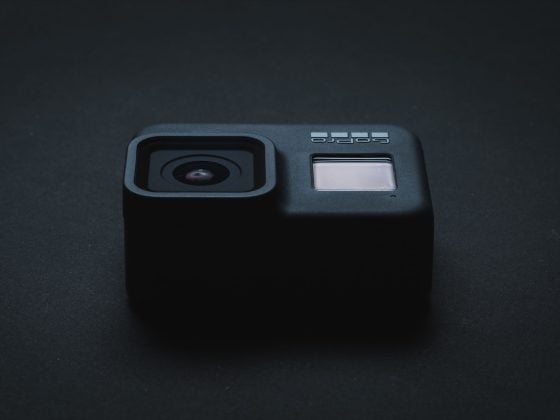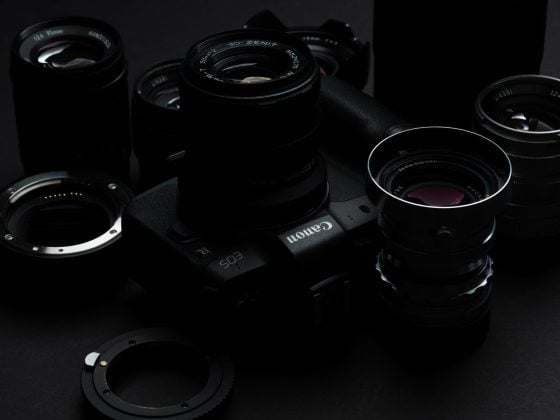When I first saw the Kamlan 50mm f1.1 version II announcement, I was a bit skeptical and ultimately not interested. The first one was just a swing and missed, which made me a little skeptical about Kamlan as a brand, even though their build quality is always stellar.
Then I saw a few images of this new version II lens.
Kamlan totally changed it up with a completely new design, improving the one thing that would make a huge difference –
They made it way bigger!

Kamlan 50mm f1.1 II Impressions
Lens size is everything when it comes to optical quality. A small lens of the same aperture cannot perform as well as a large lens of the same aperture; it’s just physics.
You can cheat it to some extent, as Mitakon does, by using plastic elements, but that always comes at a cost.
It’s funny how people still don’t understand this, and I always find it funny when I see people complaining that something like a 7Artisans 35mm f1.2 isn’t as good as the Sigma Art.

The Kamlan 50mm f1.1 version was just too small for an f1.1 APS-C lens, and those who read my review probably noticed immediately that I didn’t care much for it on APS-C cameras. It was a cool micro four-thirds lens, but on APS-C, it just wasn’t good enough. The main problem was that it was only sharp in the very extreme center.

By making version II much bigger, they have fixed this issue, and now more of the frame can be sharp.
Kamlan also managed to improve the lens by still keeping the element count fairly low which does two things.
- It creates fewer surfaces for the light to reflect and refract off of. This improves contrast and micro-contrast.
- Glass is basically a rock, the less rock the light has to pass for the better its fidelity. This improves micro-contrast.
In other words, you get better micro-contrast. Something that no lens manufacturer does anymore except maybe Fujifilm.
As much as I love the new Nikon Z lenses, they all have pretty weak micro-contrast, and while my Nikon 85mm f1.8 has near-perfect image quality, the image is significantly more boring than the Fujinon 56mm f1.2.

Kamlan’s Thoughtful Touch
Kamlan also added a really cool thoughtful touch, they included a 3-stop ND filter.
One problem with many of these third-party lenses is that they don’t have the super-advanced nanocrystal adamantium Kryptonian patented secret sauce lens coatings that the big Japanese companies have.
It’s not just the front elements that get these coatings but also the inner elements.
Lens coatings do more than reduce flaring. They improve light transmittance significantly and also reduce inner element light scattering when shooting in crazy bright environments.
Sometimes, there is just too much light for a lens to deal with, and this degrades the image quality, especially with these super-fast low-element third-party lenses.
There are a few things you can do to help the lens deal with bright environments, which you can probably already guess. Use a Polarizer or an ND filter.

The disadvantage of using a polarizer or ND or UV filter is they will reduce some contrast and micro-contrast and cause more flaring. They can also ruin any unique lens flares the front element might produce.
I try not to use filters anymore unless absolutely necessary, and I recommend that if you get this lens, you remove the ND and store it until you need it.
The lens hood is big enough and beefy enough so that you probably won’t need a UV filter for protection as long as you always remember to put your lens cap on when storing it in your bag.
It’s Not Perfect, But Still Fun
Of course, lenses like this are never perfect, when Fujifilm makes their 9-element primes they are also not perfect because Fujifilm tends to favor lens character over the corner to corner sharpness. There is a balance to this that Fujifilm tends to usually get right.
This lens is still more of a character lens but with dramatic improvements over the Kaman 50mm f1.1 mark I.
I say that because it’s not incredibly sharp at f1.1. It also flares up a bit when hit by direct light, but it does do a pretty good job of dealing with chromatic aberrations.


There is an obsession online with sharpness, but when dealing with a lens with this shallow depth or any super fast lenses, you’re only getting a few millimeters of the image in focus anyway.
I sometimes find it to look weird when you’re focusing on a face that’s tilted slightly, but only the center 5 eyelashes of one eye are extremely sharp. It doesn’t look cool. It looks digital and distracting. So, I’ve always been okay with lenses like this that aren’t always perfectly sharp at every aperture.
There are a few exceptions, but landscape lenses should have very good corner-to-corner sharpness.
There is sometimes a danger of a lens not being sharp enough, especially if you’re using high-megapixel cameras and like to crop a lot. But for the most part, sharpness is definitely not the most important attribute for many photography styles, and in my opinion, f1.1. On the Kamlan 50mm f1.1 II is sharp enough.



Kamlan 50mm f1.1 II | Final Thoughts
So far I’m pretty happy with how this lens has been rendering. Regarding the price, you can’t ask for more, and it delivers on its promises.
I don’t know its flaws yet since I haven’t stress-tested it or shot any charts, but the real-world look is impressive.
Kamlan 50mm f1.1 II – Amazon
Amazon says the lens hood is plastic. I bought mine off Amazon, and it was made of metal. I wish it were plastic because I’ve already dented it.
Also, nowhere on Amazon does it say it comes with an ND filter, but mine did.




| **This website contains affiliate links. We will earn a small commission on purchases made through these links. Some of the links used in these articles will direct you to Amazon. As an Amazon Associate, I earn from qualifying purchases. |






